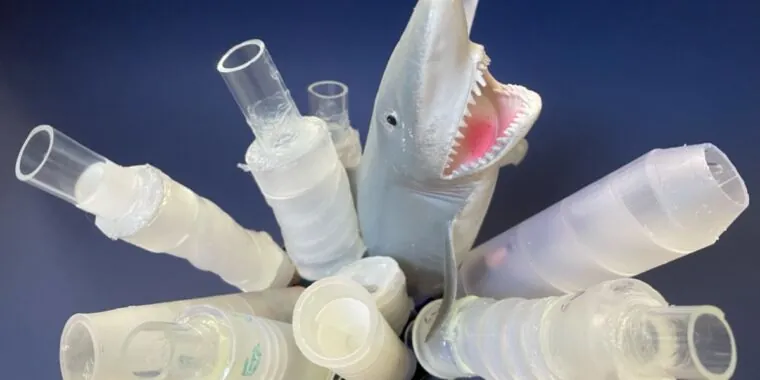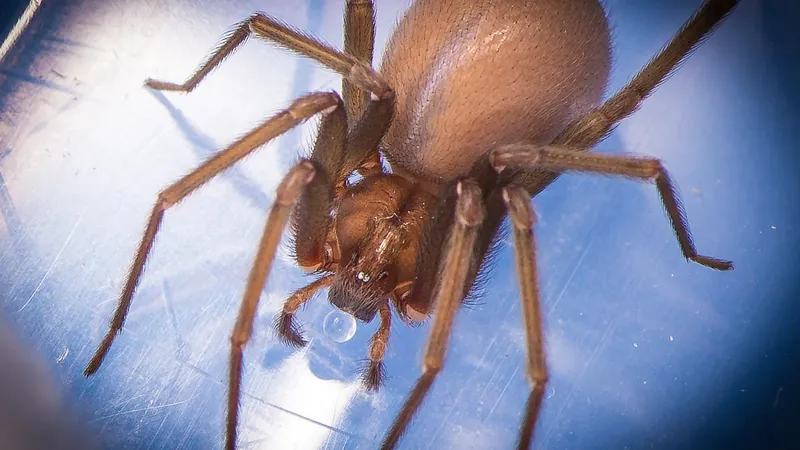
Revolutionary 3D-Printed Shark-Inspired Pipes Leave Tesla Valves in the Dust!
2024-09-26
Introduction
In a groundbreaking study, scientists at the University of Washington have designed innovative 3D-printed pipes modeled after the unique spiral structure of shark intestines. This cutting-edge project not only aims to explore fluid dynamics but has also revealed these pipes to vastly outperform traditional Tesla valves, particularly when constructed from soft polymers. The research was recently published in the esteemed Proceedings of the National Academy of Sciences.
The Tesla Valve: A Historical Overview
The Tesla valve, invented by the legendary Nikola Tesla in 1920, was designed as a revolutionary "valvular conduit." It allows fluid to flow in one preferred direction without the need for moving parts, making it exceptionally useful for microfluidic applications. Tesla touted that water would flow 200 times slower in one direction compared to the other, an assertion that was later challenged by scientists who found it to be closer to a two-fold difference.
Challenges with Traditional Tesla Valves
While the Tesla valve utilizes interconnected, asymmetric shapes to limit flow in the reverse direction, it tends to generate turbulent flows at higher pressures, creating disruptions that can choke the system. This flicker of understanding has sparked curiosity among researchers regarding how nature has solved similar problems over millennia.
Nature's Inspiration: Shark Intestines
The remarkable anatomy of shark intestines has long inspired academic inquiry. In recent years, researchers discovered that the spiral formations found in these intestines effectively act as natural Tesla valves, efficiently managing the passage of food through the digestive system. This prompted University of Washington postdoctoral researcher Ido Levin to investigate further, particularly questioning how such asymmetrical flow could occur in the absence of moving mechanisms.
3D-Printing Innovation and Findings
By mimicking shark intestinal structures, Levin and his team 3D-printed several prototypes, altering geometrical parameters like the number of helical turns. To their delight, even the initial rigid designs exhibited the anticipated flow asymmetry. Delving deeper into the mechanics, they found that when mimicking more flexible, softer materials, the performance surpassed anything previously recorded with Tesla valves—reportedly achieving flow asymmetries up to seven times better!
Future Directions and Applications
But the innovation didn't stop there. The researchers recognized that shark intestines are significantly softer than their printed polymers, leading them to envision even grander potential performance with the eventual implementation of hydrogels as technology advances. These developments could address the current challenge of sourcing materials capable of enduring substantial deformation.
Implications for Industry
The implications of this research extend beyond the lab. With their unique three-dimensional design, the shark-inspired pipes can handle larger fluid volumes, which opens the door to applications in various industries—from medical devices to chemical processes. Co-author Alshakim Nelson emphasizes the ongoing efforts to refine and develop polymers that are strong yet soft enough to facilitate such advancements, thus enhancing applications in engineering and medicine.
Conclusion
As we stand on the cusp of a new era in fluid dynamics, the potential uses of these shark-inspired pipes signal an exciting future for science and technology, where nature's designs inspire human innovation like never before!


 Brasil (PT)
Brasil (PT)
 Canada (EN)
Canada (EN)
 Chile (ES)
Chile (ES)
 España (ES)
España (ES)
 France (FR)
France (FR)
 Hong Kong (EN)
Hong Kong (EN)
 Italia (IT)
Italia (IT)
 日本 (JA)
日本 (JA)
 Magyarország (HU)
Magyarország (HU)
 Norge (NO)
Norge (NO)
 Polska (PL)
Polska (PL)
 Schweiz (DE)
Schweiz (DE)
 Singapore (EN)
Singapore (EN)
 Sverige (SV)
Sverige (SV)
 Suomi (FI)
Suomi (FI)
 Türkiye (TR)
Türkiye (TR)